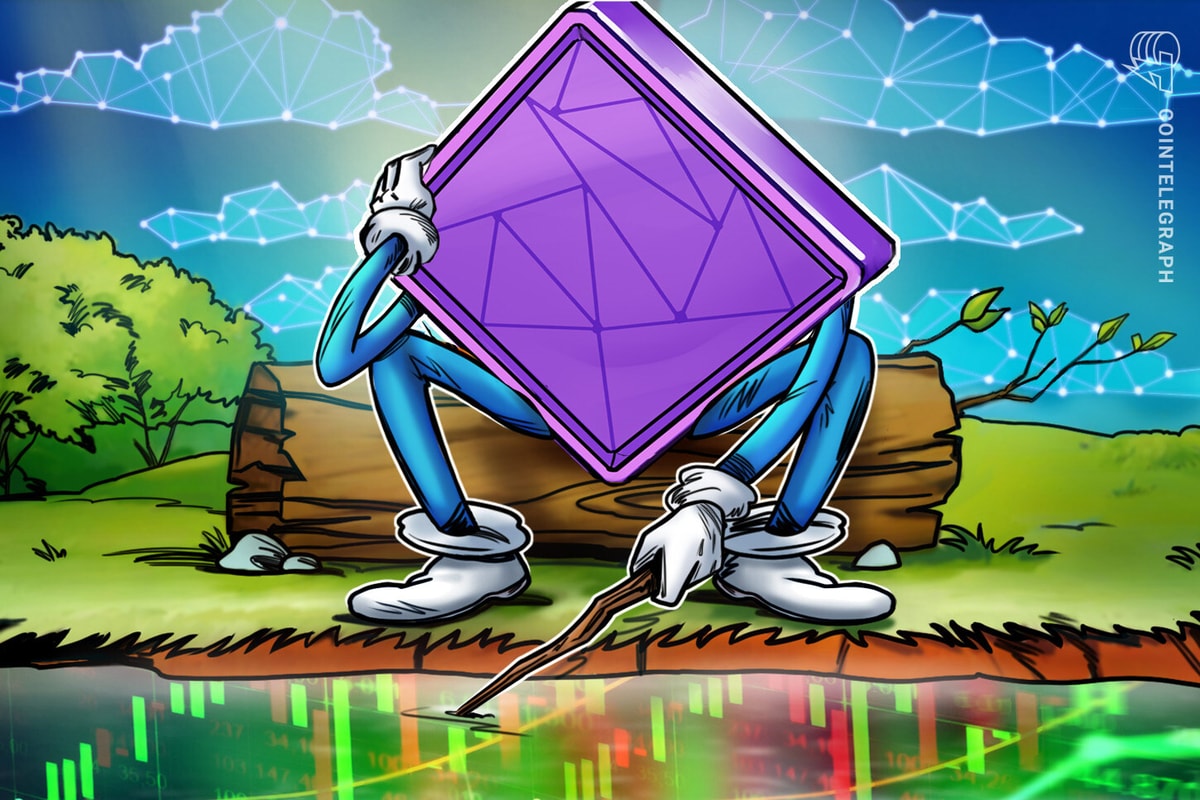Sometimes a failure is just a good idea with bad timing. Consider the Steam Machine.
In 2013, at the height of the console gaming era, Valve, the owner and operator of Steam, the biggest PC digital video game storefront, announced an attempt to mainstream PC gaming with a “console-like” experience — and convert millions of console gamers to Steam shoppers along the way. At the time, consoles were thriving, home to exclusives and the assumed first stop for 90% of AAA releases.
The Steam Machine wasn’t one literal machine, but a conceptual blueprint for gaming PC manufacturers to create cheaper, itty-bitty PCs that fit comfortably under a living room TV.
Players would surf through their video game libraries in an operating system that looked less like a Windows desktop and more like an Xbox UI. And to do so, they’d use a special controller that blended the console controls of the past with the laptop trackpads of… well, also the past.
Despite the hopes of many industry analysts, the Steam Machine project, which promised all the benefits of PC gaming with no headaches, led to a paltry set of middling gaming PCs. Valve mothballed the strategy in 2018.
Of course, that’s not the end of the story. Far from it.
Though the hardware died, the dream nonetheless persisted. The Steam Machine has inspired more industry changes in its death than most video game consoles do in life. Valve’s primary goal was to get its storefront on more screens, but it was the Steam Machine’s secondary function — popularizing PCs — that resonated.
A decade ago, according to a chart by Visual Capitalist, PCs had managed parity with consoles after years eating their dust. By 2022, however, PC gaming accounted for $45 billion in revenue — 50% more than its console cousins. And in 2025, a decade after Valve launched the first Steam Machines, PC gaming will have its victory lap, thanks in large part to another piece of Valve hardware.
Here’s how PC gaming went from “hardcore” to mainstream, and why you should expect PC gaming culture to expand even further in the years to come.
PCs aren’t intimidating now that they look (and feel) like a Nintendo Switch
In the 1990s and early 2000s, people who preferred console games had a fair and repeatable critique of PC gaming: You’d spend as much time fighting the machine as you would playing a game. PC gaming, its critics would say, meant lots of tinkering, where consoles — for all their limitations — just worked.
Now, you can experience the lion’s share of what PC gaming offers through a Steam Deck without worrying about specs, GPUs, or processors and without ever seeing Windows’ blue screen of death — or Windows at all. The Steam Deck condenses many of Valve’s best ideas from the Steam Machine into a single, reasonably priced, portable device — that also can connect to your TV via HDMI, of course.
The Steam Deck looks and feels like a Nintendo Switch but with all the freedom and perks of traditional PC gaming. For example, mods no longer require lengthy setups from sketchy websites; they can be added to a game directly from the Steam Workshop. For people tempted to tinker beyond simple mods, the Steam Deck also includes a Linux desktop experience. A cottage industry of YouTubers, writers, and coders produces a constant stream of guides and tools to simplify once complex processes like setting up a dozen or more emulators or access to things like Xbox Game Pass.
A decade ago, PC manufacturers struggled to translate Valve’s vision of the Steam Machine into a viable commercial product. They needed to see what success looked like if they ever hoped to achieve it themselves. Today, the Steam Deck serves as a tangible example of what an approachable, marketable “console-like” PC experience can be. Companies like Asus, Alienware, Lenovo, Logitech, and Ayaneo have spent the past year flooding the market with Steam Deck competitors, and 2025’s release calendar is already filling with plenty more handheld gaming PCs.
My colleague Sean Hollister wrote at The Verge about how this shift may allow Valve to take a kind of soft control of the PC gaming space, that other hardware makers could shift to SteamOS and Valve itself could return to the living room hubs of the Steam Machine era, now in a position of strength. And all of that might happen. But while Valve has a history of controlling the PC digital storefront market, it’s been notoriously slow (if not outright unwilling) to grow into something that could rival Sony or Microsoft.
That’s fine. Even if Valve simply keeps its course, the Steam Deck has already turned PC gaming into a snowball rolling downhill, getting bigger and bigger and bigger. It can’t be stopped. And the whole industry is better off for it.
‘AAA’ exclusives became too financially risky
Dragon Age: The Veilguard was in development for nine years. The “smaller” Senua’s Saga: Hellblade 2 was in development for nearly five years. Major video game publishers — fixated on making games that suck up dozens if not hundreds of hours — have perpetually expanding teams spending more time making fewer games. As a result, “AAA” games are more expensive to produce than they have been at any point in history.
Thus, the survival of big-budget video game studios depends on each major release reaching the largest audience possible.
Xbox has even begun to move many of its releases to rival hardware, like the Nintendo Switch and PlayStation 5, hoping to recoup its budgets (and humor an ever-watchful FTC).
But for games that cost hundreds of millions of dollars to make and market, the cumulative console player base still isn’t enough. And so, nearly every publisher, big and small, is porting its games to PC — often releasing them on the same day they hit consoles.
This is a radical change from 15 years ago, when many game publishers avoided PC releases due to widespread (and in hindsight, demonstrably unreasonable) fears of piracy. And from 10 years ago, when what games did arrive on PC were gated behind byzantine, publisher-owned apps.
Now, you can skim Steam and see games from EA, Ubisoft, and Activision, along with Microsoft and Sony. The major holdout is Nintendo — which has been busy battling emulation of its games on PC hardware.
Video game publishers need to break free of this cycle of scale. But until they do, the best way to break even (let alone profit) will be expanding their pool of customers with the millions of PC gamers.
People expect to enjoy their media wherever and whenever — not just on their sofa
Remember the Xbox One, the colossal failure from which Microsoft has never fully recovered? Its architects imagined the Xbox as the center of entertainment. People would funnel their entire media diet — from their streaming apps to their cable box — through the Xbox hardware, making it the centerpiece of the living room. The “One” home entertainment machine to rule them all.
Microsoft overlooked one fatal fact: The average person no longer spends their free time in the living room sharing a TV. With the rise of the smartphone and laptop, people now consume media whenever and wherever is most convenient and comfortable. So as Microsoft imagined families gathering around the living room TV, parents and kids were splitting up to consume media on their screen of choice. Four years later, Nintendo went the other direction with the Nintendo Switch, a video game console that could be removed from its dock and played wherever the kids and parents went.
But it’s PCs that have long untethered gaming from the living room. Because PC owners can choose from hundreds of variants — or build their own gaming PC altogether — PC gaming has existed on storefronts and digital libraries that follow players from one device to the next. So, if you want to play PC games on a console-like system, you can. Or you can do so on a gaming laptop, a handheld device, or a traditional desktop machine.
Following the failure of the Xbox One, current Xbox CEO Phil Spencer has been charting a many-years-long path to make Xbox an anywhere brand instead of just a console. The company’s “This is an Xbox” ad campaign — which shows Xbox games running on the Xbox console but also smartphones, laptops, and handheld PC gaming devices — is a clear culmination of that effort.
But what has taken Xbox nearly a decade to achieve has been possible with PC gaming the whole time.
What even is a console at this point?
For decades, consoles were an obvious choice for most gamers. They were cheaper, had comparable graphical power at their launch, required minimal technical expertise, and were the only way to play some of the biggest games of a given year. Now all those arguments apply more to portable PCs like the Steam Deck than they do to consoles.
The PS5 Pro launched a few months ago for an eye-watering $700. Its visuals still can’t compare to high-end PCs. The system’s big exclusives eventually make it to PC, where they often run better and are sold for less. Meanwhile, Xbox’s latest commercial spends more time showing Xbox games on devices other than its own console. And PCs offer a wider selection of indie and multiplayer games than consoles, too.
In March 2024, Spencer told Polygon he’d like to see PC gaming storefronts like Epic Games Store and Itch.io running on Xbox hardware. And this past month, rumors have swirled that Steam may appear on Xbox.
This — should it come to pass in 2025 — is the endgame scenario. PCs won’t surpass consoles; consoles will become PCs.

 1 week ago
7
1 week ago
7












 English (US) ·
English (US) ·